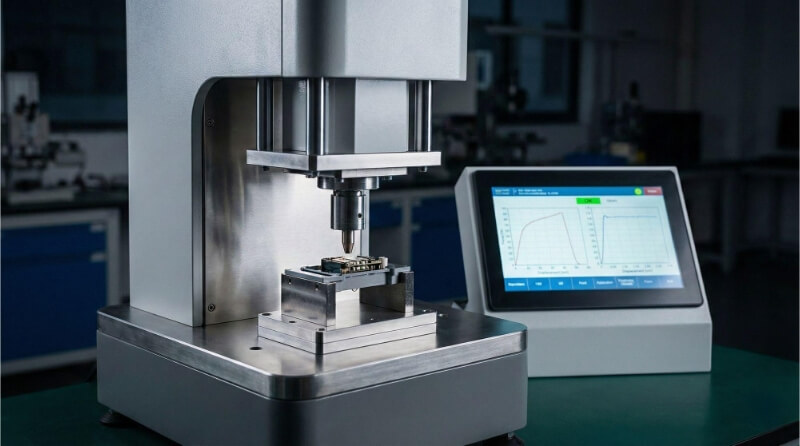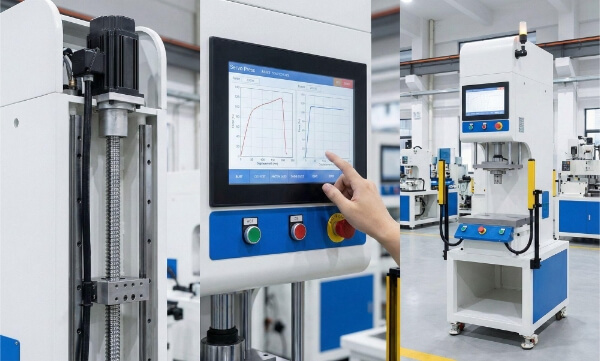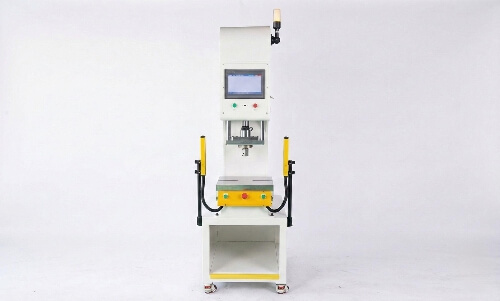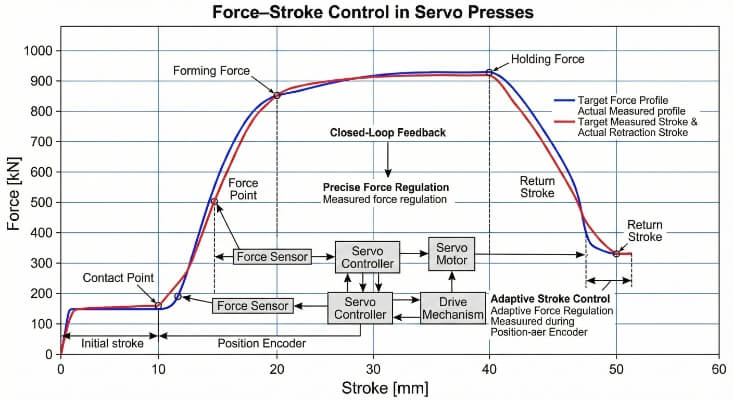Las piezas de plástico se demandan en casi todos los sectores. Cuando los proyectos necesitan productos ligeros, duraderos y económicos, el moldeo por soplado suele ser la opción elegida. Sin embargo, muchos siguen enfrentándose a problemas como un mal acabado superficial, un grosor de pared desigual y un alto índice de desechos, que ralentizan la producción y elevan los costes. Estos problemas pueden evitarse con los conocimientos y prácticas adecuados.
El moldeo por soplado ofrece una amplia gama de soluciones para envases y necesidades industriales. Veamos los métodos principales, sus usos y cómo obtener los mejores resultados.
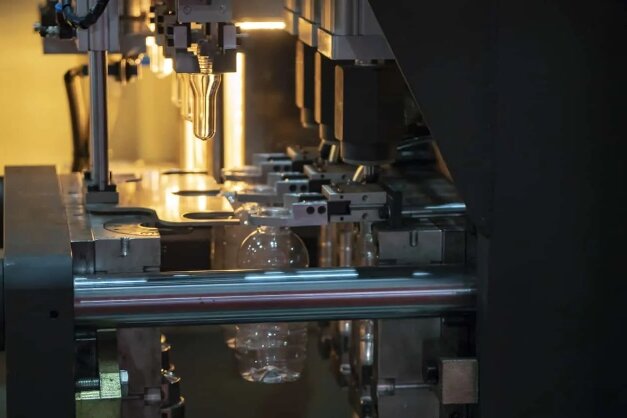
Qué es el moldeo por soplado?
El moldeo por soplado es un método de moldeado de plástico. Empieza fundiendo plástico y formando un tubo hueco llamado parison. Este parison se coloca en un molde. A continuación, se insufla aire comprimido en el parison. El aire empuja el plástico hacia fuera y adopta la forma del molde. Una vez enfriado, el molde se abre y se extrae la pieza.
Este proceso rápido y fiable se utiliza para fabricar botellas, recipientes, conductos y mucho más. La forma del producto final depende del diseño del molde.
Principios básicos del moldeo por soplado
El moldeo por soplado se basa en el calor, la presión del aire y el control del material para crear piezas huecas uniformes y de alta calidad. Cada paso debe ser preciso para evitar defectos.
El papel del calor, la presión atmosférica y la expansión del plástico
El calor ablanda el plástico para que pueda moldearse. La temperatura debe ser lo suficientemente alta para permitir el estiramiento, pero no tanto como para debilitar el material.
La presión del aire empuja el plástico reblandecido contra las paredes del molde. La presión debe ser constante y lo suficientemente fuerte como para rellenar todos los detalles.
A medida que el aire expande el plástico, éste adopta la forma del molde. El enfriamiento comienza inmediatamente para fijar la forma.
Comprender el parisón y la formación de preformas
En el moldeo por extrusión-soplado, el plástico fundido se forma en un parison, un tubo hueco que se inflará.
En inyección y el moldeo por estirado-soplado, el material se moldea en una preforma. Posteriormente, esta preforma se recalienta y se sopla para darle su forma definitiva.
La precisión del tamaño y grosor del parisonte o preforma afecta a la uniformidad y resistencia de la pared del producto final.
Comportamiento del material en el proceso de moldeo por soplado
Los plásticos responden de forma diferente al calor y la presión. Materiales como el PET y el HDPE tienen patrones de flujo y estiramiento predecibles, lo que los convierte en opciones habituales.
Durante el soplado, el material se adelgaza a medida que se estira. El diseño del molde y las condiciones de soplado deben tener esto en cuenta para evitar puntos débiles.
Las velocidades de enfriamiento también afectan a la resistencia y al acabado superficial. Un enfriamiento más rápido puede mejorar la velocidad de producción, pero puede reducir la claridad en algunos plásticos.
Tipos de procesos de moldeo por soplado
El moldeo por soplado tiene varios métodos principales. Cada uno funciona mejor para determinadas formas, materiales y necesidades de producción.
Extrusión Soplado
Con este método se extruye plástico fundido en un tubo hueco, llamado parison. El molde se cierra alrededor del parison y se insufla aire en su interior para formar la pieza.
Es muy adecuada para grandes contenedores, depósitos de combustible y piezas industriales. Maneja una amplia gama de tamaños y formas. Los tiempos de ciclo son cortos y los costes de utillaje son inferiores a los de otros métodos.
Moldeo por inyección-soplado
Este proceso comienza inyectando plástico fundido en un molde para formar una preforma. A continuación, la preforma se traslada a un molde de soplado, donde la presión del aire le da forma.
Ofrece un excelente control del grosor de las paredes y acabados lisos. Se suele utilizar para botellas médicas, envases de cosméticos y otros envases de alta calidad. El proceso tiene unos costes de utillaje más elevados, pero es ideal para piezas más pequeñas y precisas.
Moldeo por soplado y estirado
El moldeo por estirado-soplado combina el estirado y el soplado para mejorar la resistencia y la claridad. La preforma se recalienta, se estira longitudinalmente y, a continuación, se sopla para darle su forma final.
Es el método preferido para las botellas de PET utilizadas en bebidas. El estiramiento alinea las cadenas de polímeros, lo que hace que el envase sea más fuerte y resistente a los impactos. Este método ofrece gran claridad, buenas propiedades de barrera y dimensiones uniformes.
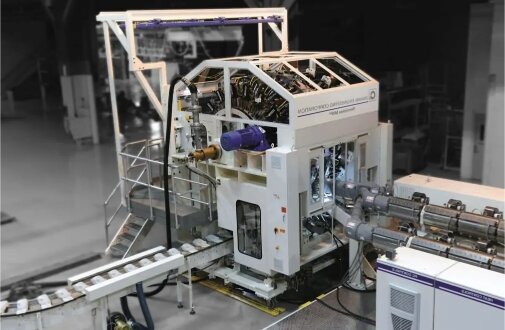
Materiales utilizados en el moldeo por soplado
La elección del material afecta a la resistencia, claridad, coste y reciclabilidad del producto. Los distintos plásticos se adaptan mejor a determinados tipos de productos y usos.
Termoplásticos comunes
PET (tereftalato de polietileno) se utiliza ampliamente para botellas de bebidas. Ofrece gran claridad, resistencia y buenas propiedades de barrera a los gases.
HDPE (polietileno de alta densidad) se utiliza habitualmente para jarras de leche, botellas de detergente y depósitos de combustible. Es muy resistente a los impactos y a los productos químicos.
PVC (cloruro de polivinilo) se utiliza para envases que necesitan estabilidad química. Puede ser transparente o coloreado y tiene buena conformabilidad.
Propiedades de los materiales que influyen en la producción
La temperatura de fusión afecta al tiempo de calentamiento y al consumo de energía. Los plásticos de fusión más baja se procesan más rápido, pero pueden tener menor resistencia al calor.
La viscosidad influye en la uniformidad con la que el plástico se estira en el molde. Los materiales con una fluidez equilibrada reducen los puntos finos.
El índice de contracción afecta a las dimensiones finales. Los materiales con baja contracción ofrecen un mejor control dimensional.
Proceso paso a paso del moldeo por soplado
El moldeo por soplado sigue una secuencia clara desde la materia prima hasta la pieza acabada. Cada etapa debe controlarse para mantener la calidad del producto.
Preparación del material
Los gránulos de plástico se secan para eliminar la humedad, que puede provocar burbujas o puntos débiles en el producto final. A continuación, los gránulos se introducen en la tolva de la máquina. Un husillo o ariete empuja el material a un barril calentado, donde se funde uniformemente.
Formación del parisón o preforma
En el moldeo por extrusión-soplado, el plástico fundido fluye a través de un cabezal para formar un parison. El grosor del parison puede ajustarse a la forma de la pieza. En el moldeo por inyección o estirado-soplado, el plástico fundido se inyecta en un molde de preforma. La preforma se enfría antes de la fase de soplado.
Soplado y conformación del producto
El parison o preforma se coloca en un molde enfriado. El aire comprimido infla el plástico caliente hasta que toca las paredes del molde. La forma y los detalles del molde se transfieren directamente a la superficie del producto. La presión constante del aire garantiza un grosor uniforme de las paredes.
Pasos de enfriamiento, recorte y acabado
El enfriamiento comienza en cuanto el plástico entra en contacto con el molde. Los canales de refrigeración de agua o aire del molde aceleran este paso. Una vez enfriado, el molde se abre y se extrae el producto. La rebaba, o exceso de plástico, se recorta.
Ventajas y limitaciones del moldeo por soplado
El moldeo por soplado ofrece muchas ventajas de producción, pero también tiene algunos límites que afectan a cuándo y cómo se utiliza.
Ventajas
- Alta velocidad de producción - Las máquinas pueden funcionar continuamente para pedidos de gran volumen.
- Rentabilidad - La escasa necesidad de mano de obra y el mínimo desperdicio de material mantienen los costes bajos.
- Flexibilidad de diseño - Las asas, las curvas y las formas complejas pueden fabricarse en una sola pieza.
- Amplia gama de materiales - Funciona con PET, HDPE, PVC y otros termoplásticos.
- Piezas ligeras - Cree productos resistentes pero ligeros para envases y usos industriales.
Limitaciones
- Control del espesor de pared inferior - Especialmente en el moldeo por extrusión-soplado, pueden producirse variaciones en las paredes.
- Precisión limitada - No es ideal para tolerancias dimensionales extremadamente ajustadas.
- Alto coste de utillaje para determinados métodos - El moldeo por inyección y soplado requiere moldes caros.
- Restricciones específicas de los materiales - Algunos plásticos son más difíciles de procesar o tienen propiedades de uso final limitadas.
Aplicaciones de los productos moldeados por soplado
El moldeo por soplado se utiliza en muchas industrias porque puede fabricar piezas huecas resistentes, ligeras y de bajo coste en grandes volúmenes.
Industria del embalaje
Las botellas de bebidas, las jarras de leche y los envases de limpiadores domésticos son los productos más comunes moldeados por soplado. El PET se utiliza para botellas transparentes, mientras que el HDPE funciona bien para envases opacos.
Los diseños especiales de los moldes permiten asas, aberturas anchas y formas únicas, lo que hace que el proceso sea popular tanto para envases estándar como personalizados.
Piezas industriales y de automoción
El moldeo por soplado produce depósitos de combustible, depósitos de fluidos y conductos de aire. El HDPE suele utilizarse para estas piezas porque resiste los productos químicos y los impactos.
Con este proceso también se fabrican bidones industriales y tanques de almacenamiento. Los moldes grandes pueden crear piezas con capacidad para cientos de litros.
Bienes de consumo y diseños personalizados
El moldeo por soplado puede utilizarse para fabricar juguetes, equipamiento deportivo y productos de jardinería. El método admite muchos colores y acabados para mejorar el aspecto.
Los diseños personalizados son posibles ajustando la forma del molde, el grosor de la pared y la elección del material. Esto permite flexibilidad para productos especializados.
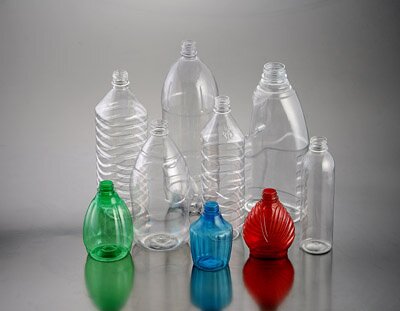
Buenas prácticas para una producción satisfactoria de moldeo por soplado
Una buena planificación y control en cada fase ayudan a reducir los defectos y mejorar la eficacia en el moldeo por soplado.
Optimización de los parámetros de proceso para lograr coherencia
En función del material y del diseño de la pieza, ajuste la temperatura de fusión, la presión de aire y el tiempo de enfriamiento correctos. Los pequeños cambios en estos ajustes pueden afectar al grosor de la pared y al acabado de la superficie.
Supervise regularmente el rendimiento de la máquina. Un funcionamiento constante reduce los residuos y mantiene estable la producción.
Elegir el material adecuado para la aplicación
Adapte las propiedades del material al uso del producto. El PET ofrece claridad y resistencia para las botellas, mientras que el HDPE proporciona durabilidad para las piezas industriales.
Al seleccionar los plásticos, hay que tener en cuenta el coste, la resistencia química y los factores medioambientales. El uso de materiales reciclados o de origen biológico puede cumplir los objetivos de sostenibilidad sin sacrificar el rendimiento.
Colaboración con los diseñadores para fabricar productos
Trabaje con los equipos de diseño desde el principio. Ajuste las formas, el grosor de las paredes y los detalles del molde para facilitar la producción y reducir los desechos.
Proporcione información sobre la geometría de las piezas para evitar socavaduras o esquinas afiladas que provoquen tensiones en el producto final.
Conclusión
El moldeo por soplado es un método rápido y versátil para producir piezas huecas de plástico. Funciona con muchos materiales, admite formas complejas y ofrece resultados rentables para necesidades de envasado, automoción e industriales. Con los ajustes de proceso, la elección de materiales y el enfoque de diseño adecuados, los fabricantes pueden lograr una calidad constante y una alta eficiencia de producción.
¿Busca soluciones de moldeo por soplado fiables y adaptadas a las necesidades de su proyecto? Póngase en contacto con nosotros para hablar de sus necesidades y obtener un presupuesto rápido y profesional.
Hola, soy Kevin Lee

Durante los últimos 10 años, he estado inmerso en diversas formas de fabricación de chapa metálica, compartiendo aquí ideas interesantes de mis experiencias en diversos talleres.
Póngase en contacto

Kevin Lee
Tengo más de diez años de experiencia profesional en la fabricación de chapas metálicas, especializada en corte por láser, plegado, soldadura y técnicas de tratamiento de superficies. Como Director Técnico de Shengen, me comprometo a resolver complejos retos de fabricación y a impulsar la innovación y la calidad en cada proyecto.

